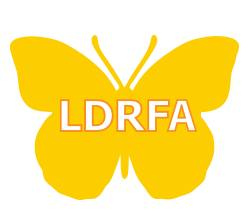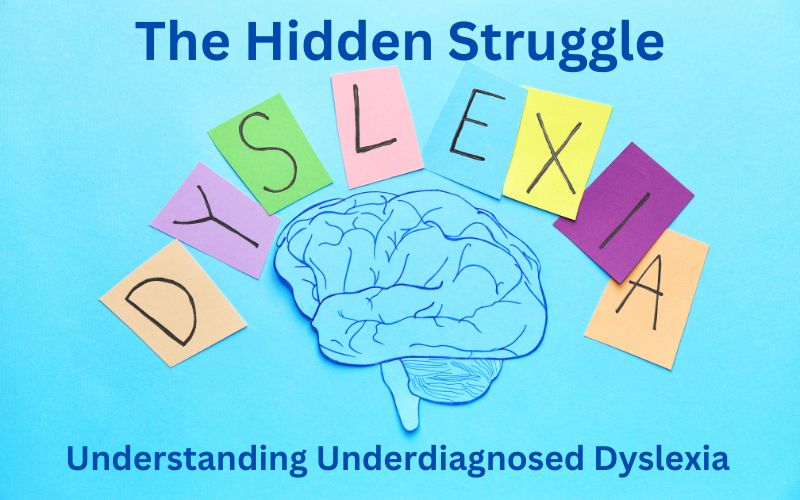Dyslexia and Its Impact on Children
Dyslexia is more than just difficulty with reading or spelling; it’s a unique wiring of the brain that can affect various aspects of learning. Despite its prevalence, misconceptions and stigma often shroud this condition, leading to underdiagnosis.
Table of Contents
ToggleThe Misconceptions and Stigma Surrounding Dyslexia
Misconceptions surrounding dyslexia perpetuate the stigma, inhibiting accurate recognition and support. Many still view dyslexia solely as a reading problem, overlooking its broader impact on cognitive functions. Dissecting these myths is crucial in dispelling the cloud that obscures a proper understanding of dyslexia.
The Prevalence of Underdiagnosed Dyslexia in Children
Surprisingly, dyslexia often goes unnoticed in children. Its prevalence is underestimated due to misconceptions and a lack of awareness. Unraveling the hidden prevalence is the first step towards addressing the silent struggle that undiagnosed children endure.
Reasons Behind Underdiagnosis in Children
Various factors contribute to the underdiagnosis of dyslexia. These may include limited awareness among parents and educators, lack of appropriate screening tools, and the diverse ways dyslexia manifests. Understanding these reasons is essential to implement effective strategies for early identification.
Challenges Faced by Children with Undiagnosed Dyslexia
Children grappling with undiagnosed dyslexia encounter multifaceted challenges. Academic hurdles, social difficulties, and emotional strains become part of their daily lives. Unraveling these challenges sheds light on the urgency of breaking the cycle of underdiagnosis.
Recognizing the hidden struggle of underdiagnosed dyslexia is imperative for fostering a supportive environment for affected children. Dispelling myths, increasing awareness, and understanding the prevalence and reasons behind underdiagnosis are vital steps in ensuring that every child receives the support they need to overcome the challenges posed by dyslexia. It’s time to bring the hidden struggle into the open and pave the way for a more inclusive and empathetic approach to dyslexia in our communities.
Dyslexia, Causes, Signs and Symptoms, Diagnosis and Treatment.
Signs and Symptoms: How to Recognize Underdiagnosed Dyslexia
Recognizing the signs of dyslexia is crucial in identifying children who may require additional assistance. Some common signs include:
- Struggling with learning simple rhymes.
- Experiencing a speech delay.
- Difficulty following directions.
- Repeating or omitting short words.
- Difficulty distinguishing left from right.
In a school setting, children with dyslexia may exhibit the following signs:
- Difficulty decoding new words.
- Lack of fluency compared to their peers.
- Reversing letters and numbers when reading.
- Challenges with note-taking and copying from the board.
- Struggling with rhyming, associating sounds with letters, and sequencing sounds.
- Poor spelling, often spelling words phonetically.
- Reluctance to read aloud in front of classmates.
- Fatigue or frustration from reading.
These signs are not limited to the classroom; dyslexia can also impact children outside of school. They may find it difficult to decode logos and signs, struggle with multi-step directions, have trouble telling time, and face challenges in learning a second language.
RELATED: How a disgraced method of diagnosis learning disabilities persists in our nation’s schools.
The Importance of Early Identification and Intervention
Unfortunately, dyslexia often goes undiagnosed, leading to a host of negative consequences for affected children.
Early diagnosis is key in providing timely support for children with dyslexia. While dyslexia can begin to manifest at a young age, it is recommended to wait until children are at least six years old and have received formal instruction in reading before seeking a formal evaluation. However, if a significant gap between intelligence and reading skills becomes apparent, intervention should not be delayed. Waiting until later grades can further damage a child’s self-image and hinder their progress.
Diagnosing Dyslexia
Diagnosing dyslexia involves a comprehensive evaluation of a child’s intellectual capacity and reading skills. Parents can request an evaluation from their school district to assess their child’s ability and achievement. However, it is essential to ensure that the evaluation considers dyslexia specifically and rules out other potential causes or environmental factors. If unsatisfied with the school’s evaluation, parents can seek a private evaluation from professionals such as psychologists, neuropsychologists, or reading specialists.
The Impact of Underdiagnosed Dyslexia on Children
Dyslexia, when undiagnosed, casts a pervasive shadow on the lives of affected children. Beyond the challenges of learning to read and write, the emotional, academic, and social consequences create a complex tapestry of struggles.
The Emotional Consequences of Underdiagnosed Dyslexia
Undiagnosed dyslexia can take a toll on a child’s emotional well-being. Frustration, self-doubt, and a sense of inadequacy often accompany academic challenges. The struggle to keep up with peers may lead to feelings of isolation and low self-esteem. Recognizing these emotional consequences is essential for fostering a supportive environment that nurtures the emotional resilience of dyslexic children.
Academic Struggles: The Silent Battle
One of the primary areas where dyslexia has a profound impact on children is in their academic pursuits. The reading and writing difficulties associated with dyslexia can make it challenging for children to keep up with their peers in school. They may struggle to read aloud, comprehend written text, and write coherently, which can lead to poor grades and a decline in self-confidence.
Underdiagnosed dyslexia intertwines with academic challenges, creating a silent battle for affected children. Difficulties in reading, spelling, and comprehension can lead to academic underachievement and a widening gap between a child’s potential and their actual performance. Addressing these academic struggles requires a multi-faceted approach involving educators, parents, and specialized support systems.
Social Isolation: Navigating the Social Landscape
The impact of underdiagnosed dyslexia extends beyond the classroom into the social sphere. The fear of judgment, coupled with difficulties in communication, can lead to social withdrawal. Peer relationships may suffer, and the stigma associated with academic challenges can further isolate dyslexic children. Understanding and addressing these social dynamics are crucial for fostering inclusive and understanding communities.
Effective Strategies and Tools for Promoting Early Detection.
Without early intervention and proper support, children with dyslexia may fall behind in their studies and develop negative attitudes towards learning. As a result, they may become disengaged from school and develop a negative self-image.
To reduce the impact of underdiagnosed dyslexia, parents, teachers, and healthcare professionals need to increase awareness and promote early diagnosis is paramount.
Some strategies and programs that have proven effective include:
- Multi-sensory instruction in decoding skills: Engaging multiple senses, such as sight, hearing, and touch, can enhance learning and retention.
- Repetition and review of skills: Regular practice and reinforcement of reading skills are essential for improvement.
- Intensive intervention: Providing more than just occasional extra help, such as small group or individual instruction, can accelerate progress.
- Teaching decoding skills: Focusing on phonics and phonological awareness can improve a dyslexic child’s ability to sound out words.
- Sight word drills: Memorizing common words can help dyslexic children recognize them more easily.
- Teaching comprehension strategies: Helping children derive meaning from what they read can enhance their overall reading experience.
- Reading programs designed for dyslexia: Programs like the Wilson Method, Orton-Gillingham Approach, Preventing Academic Failure (PAF), The Lindamood-Bell Program, and RAVE-O have shown success in supporting dyslexic learners.
Navigating Emotional Support: Guidance for Parents, Teachers, and Doctors of Children with Dyslexia
In addition to academic accommodations, it is crucial to provide emotional support and foster a positive mindset for children with dyslexia. Some ways to offer holistic support include:
The Role of Parents: Advocates and Supporters
Parents play a pivotal role in recognizing early signs of dyslexia. Observing a child’s struggles with language, reading, or spelling and seeking professional evaluation are crucial steps. Additionally, providing emotional support and fostering a positive attitude toward learning can make a significant difference in a child’s journey.
The Role of Educators: Identifying and Adapting
Educators are frontline advocates in the battle against underdiagnosed dyslexia. Training teachers to recognize the signs, employing varied teaching strategies, and creating inclusive learning environments are key steps. Early intervention in schools can significantly alter the trajectory of a dyslexic child’s academic and emotional journey.
The Role of Healthcare Professionals: Collaborators in Care
Healthcare professionals contribute to the diagnosis and support of dyslexic children. Collaborating with educators and parents, they can facilitate comprehensive assessments and recommend tailored interventions. Their role extends beyond diagnosis to ongoing support and advocacy.
Other Effective Dyslexia Strategies
Encourage the Interests and Strengths of Each Child
Nurture activities outside of academics that boost their confidence and self-esteem.
Highlight successful individuals with dyslexia:
Sharing stories of accomplished individuals like Whoopi Goldberg and Steven Spielberg can inspire dyslexic children and help them realize their potential.
Use Assistive Technology Tools:
Assistive technology tools like audiobooks, reader apps on computers or tablets, and educational apps can make learning more accessible and enjoyable. Use visual aids like rulers or colored overlays to help dyslexic children read in a straight line and improve focus.
By incorporating these strategies and providing comprehensive support, dyslexic children can overcome their challenges and excel in both academic and personal domains.
Accommodations for Children with Dyslexia
Children with a dyslexia diagnosis are eligible for accommodations in school to help level the playing field. Accommodations may include:
- Extra time on tests: Allowing more time for dyslexic children to complete exams.
- Quiet space to work: Providing a quiet environment to minimize distractions.
- Recording lectures: Allowing dyslexic children to record lectures for later review.
- Verbal responses: Allowing dyslexic children to provide verbal answers instead of written ones when appropriate.
- Elimination of oral reading in class: Reducing the pressure of reading aloud in front of classmates.
- Exemption from foreign language learning: Recognizing the challenges dyslexic children face in acquiring a second language.
Conclusion
Dyslexia is a common learning disorder that affects many children worldwide. By recognizing the signs of dyslexia early on and seeking appropriate support, parents, educators, and communities can help dyslexic children thrive academically and emotionally. It is crucial to move away from outdated models of diagnosis and embrace a comprehensive approach that focuses on intervention, accommodations, and empowerment. With the right resources and support, children with dyslexia can reach their full potential and achieve success.


